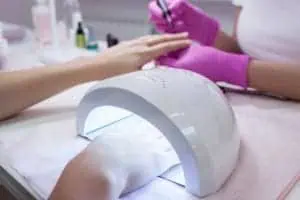
Medical Review By: Tanya Sperber, APRN
You know you’re supposed to wear sunscreen every day, even on cloudy days and in winter, but there are times when you probably wouldn’t think to bother with it. For example, what’s the point if you’re going to spend most of your day in your office?
Surprise! You can be exposed to ultraviolet (UV) rays in some common places that aren’t exactly outdoors. Over time, this exposure may contribute to an increased risk of wrinkles and skin cancer.
Prepare to slather on sun protection when you find yourself in the following situations.
Sitting by a window
Windows protect you from the sun’s rays, right? Yes and no. Glass blocks most UVB rays, the ones that cause sunburn. That’s why many people assume it’s fine to sit by a sunny window without wearing sunscreen. But according to the Skin Cancer Foundation, more than 50% of UVA rays, which are the main cause of premature aging and also contribute to some skin cancers, pass through glass.
If you’re sitting next to a window, or even if you’re a few feet away from it, it’s a good idea to wear sunscreen. For maximum protection, choose a broad-spectrum sunscreen with an SPF of 30 or higher.
“The best way to incorporate sunscreen in your regimen is to find one you love,” said Tanya Sperber, APRN, a board-certified advanced practice registered nurse with Water’s Edge Dermatology. “Elta MD Elements is a lightweight tinted sunscreen women can apply everyday prior to applying makeup. This sunscreen provides all the benefits of a physical barrier sunscreen without feeling heavy on the skin, apply makeup over or just apply sunscreen and go. A great non-tinted option for men is Elta MD Sheer – it works well for men with facial hair, rubs in completely and if you’re not sweating or swimming, you’re protected all day with a barrier zinc sunscreen.”
If your desk or favorite perch is near a window, consider installing UV-blocking window film for extra protection. These block up to 99.9% of UV radiation and are available in a variety of tints. You can have window film professionally installed or buy it at a home improvement store and install it yourself.
Driving your car
Does the left side of your face have more wrinkles or age spots than the right? Driving may be the reason.
While the windshield of your car blocks most UVA (and UVB) rays, your side windows may provide less protection. A 2016 study found that while windshields in a car blocked an average of 96% of UVA radiation, the side windows blocked an average of just 71%.
The difference is due to the types of glass. Windshields are made of two plates of glass with a layer of plastic between to make them shatterproof. Side windows don’t have that plastic layer, which is what provides most of the windshield’s UVA protection.
Experts suspect that weaker UVA protection from side windows may help explain why skin cancer is more common on the left side of the body. So, if you have a daily commute or spend long periods of time in a car, wear sunscreen. Do so even if the side windows are tinted, since the level of UVA protection that tinted windows provide varies. Remember to apply it to your arms, hands, and face.
Keep the sunscreen handy, but don’t store it in the car. The heat that gets trapped in the car can break down the chemicals in sunscreen and make it less effective.
You can also protect yourself by installing UV-blocking window film on your car’s side windows.
Traveling by plane
If you find yourself in a window seat on your next flight, you’ll need more than your boarding pass before takeoff: You’ll need a thorough application of sunscreen, too.
At 30,000 feet, the sun is much stronger than at ground level, and windows on planes (and buses and trains) may not provide adequate protection from UVA rays.
While the risk of sun damage and skin cancer appears to be higher for pilots and flight crew members than passengers, it’s still smart to wear sunscreen when you fly. Just remember that the Transportation Safety Administration currently allows no more than 3.4 ounces of sunscreen in a carry-on.
Getting a gel manicure
Love gel manicures? You’re not alone. Gels make manicures last longer compared to nail polish, but they have to be set using nail lamps that emit high-intensity UVA light.
The risk of UV damage and skin cancer from the lamps, if any, is probably low. A recent review of medical literature did not find evidence of an increased risk of skin cancer in people under 40 who’ve had gel manicures. Still, the American Academy of Dermatology suggests applying sunscreen to your hands protect yourself. If you prefer, you can wear dark, opaque gloves with the fingertips snipped off.
If you get gel manicures regularly, consider saving them for special occasions.
Article Written By: Jessica Brown, a health and science writer/editor based in Brooklyn, New York. She has written for Prevention magazine, jnj.com, BCRF.org and many other outlets.









